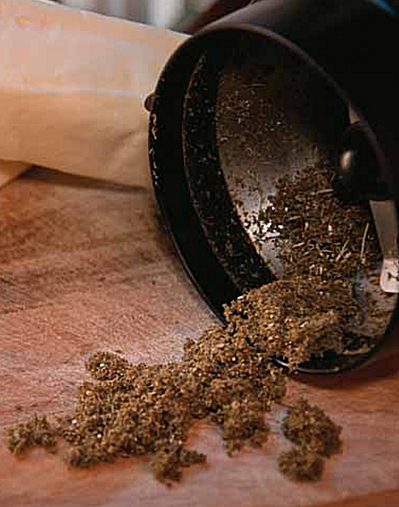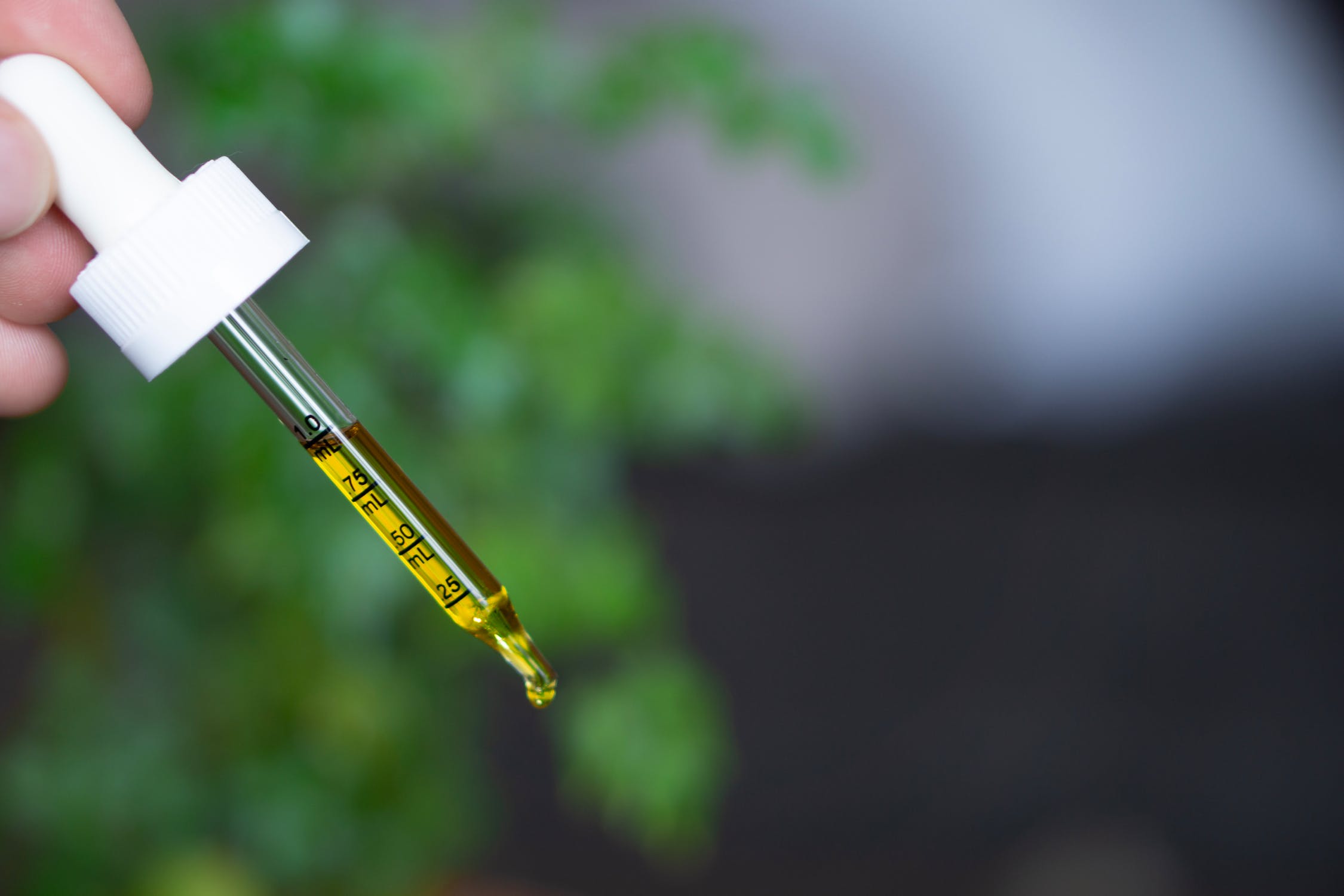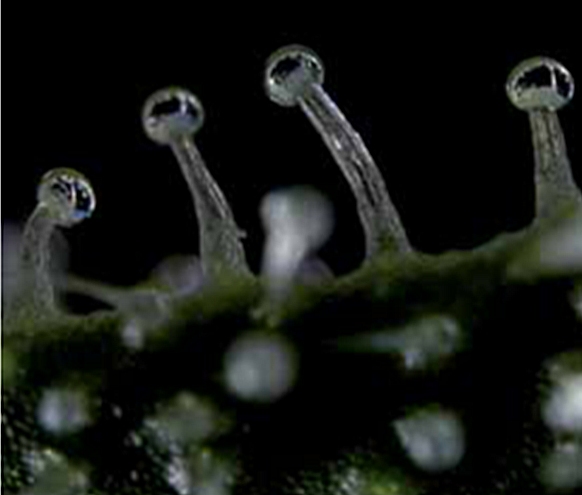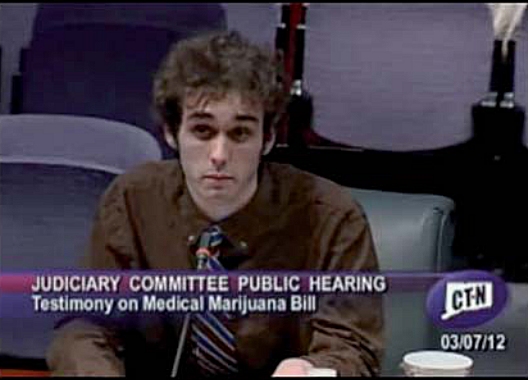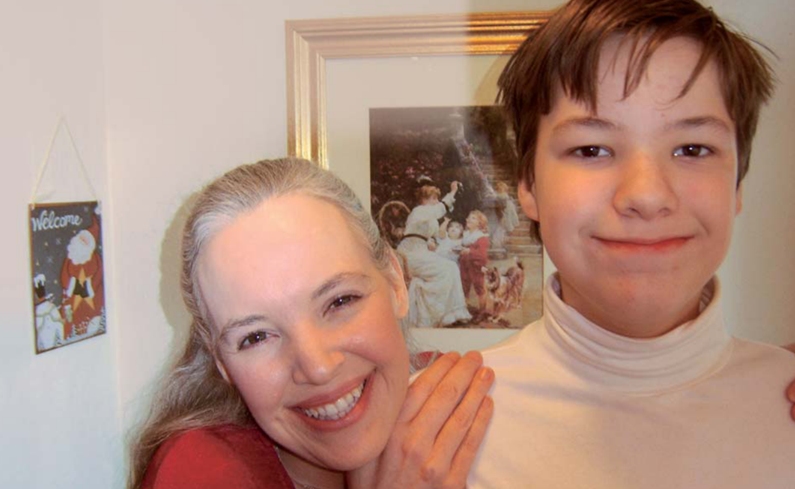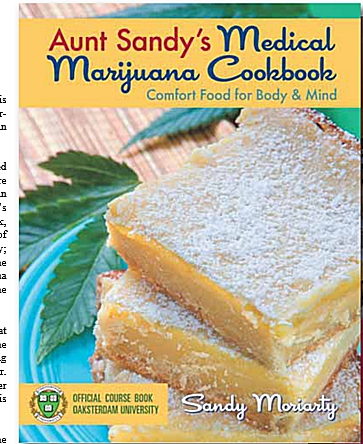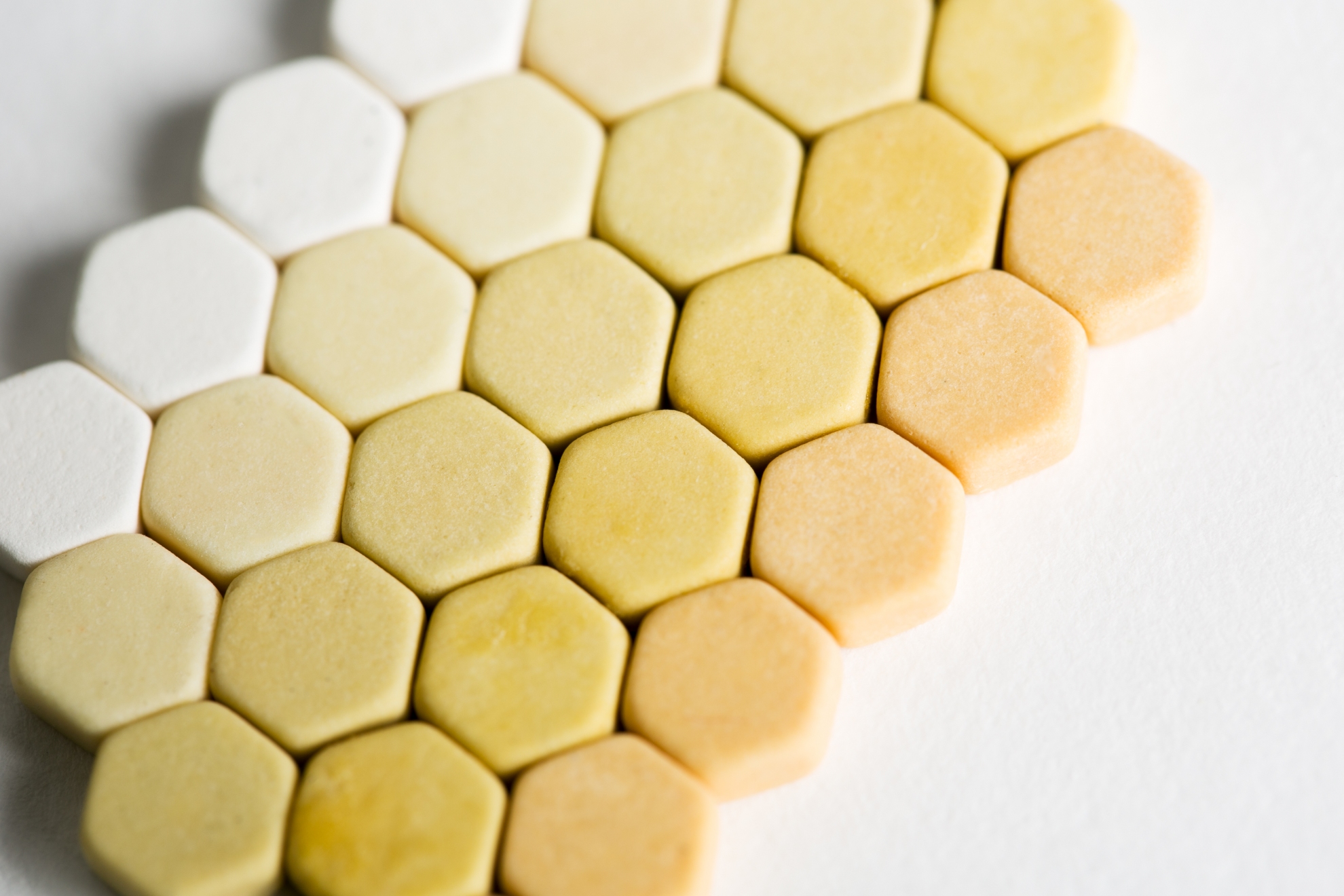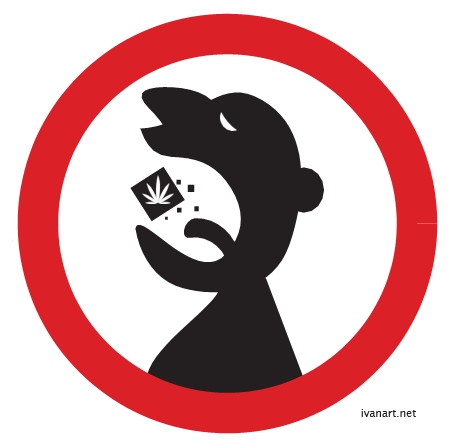
Cannabis Rx for Beginners: Proceed with Caution
By Mary Lou Smart
www.medicalcannabisart.com
A delicious brownie chock full of medicinal ben- efit? Popcorn coated with melt-in-your mouth butter to soothe life’s aches and pains? You betcha. Cannabis is perfectly suited for cooked product, and nature’s remedy is marketed in oh- so-tempting forms.
Edibles are a preferred delivery method for many patients. They can be transported easily, and taken without raising attention. The effect lasts longer — through the day or night — than smoked or vaporized product, which lasts only a few hours.
For newcomers, however, tasty treats can be problematic. Those introduced to cannabis via the recreational route often learn the fine art of titration, or measuring the cor- rect dosage, gradually, with friends that offer a joint or a pipe or a bong or a vaporizer. Inhalation provides fast delivery in doses that are simple to gauge. Take a tiny hit, or two, and the effect is immediate. If you want more, fine; if you do not, fine.
For the seriously ill, or elderly, or just about anyone who is in search of a medical benefit but has never smoked or used cannabis recreationally, tread lightly with edibles.
In Sacramento, California, Dr. David Allen cautions new- comers against beginning
with edibles. When meeting new patients, he offers suggestions about delivery methods that might work faster or where
dosage is easier to titrate. A drop of tincture, for example,
can be absorbed directly into the bloodstream sublingually, via the thin membrane under the tongue. Even with tinctures and oils, however, he advises
novices to proceed with caution.
Smoking is a good introduction for beginners, according to
Allen, because it brings familiarity with the transformation that
occurs.
“When you eat cannabis that has been baked into edibles, it’s harder to control the dose,” he said. “It is a little fright- ening for some that have never tried. A newcomer cannot eat a whole brownie and have a good experience. The rea- son smoking is so popular for first time users is that you get a tiny dose with each puff, and it has an immediate effect. You put it down as soon as you’ve had enough.”
Baked goods, which pass through the liver, take longer to be absorbed and to run their course. Many become impa- tient and eat more. If the edible is delicious, well, the temptation to eat more is even greater. As cannabinoids are metabolized by the liver, they take on power.
“The only way to really learn is to make a few mistakes, and so you’ve just got to sneak up on it,” he said.
“With edibles, I would say that the first time you try them, do not take more than a bite or two.”

Stories of first-time patients eating an entire brownie and vomiting, or even visiting an emergency room with heart palpitations, are common.
“They’re not going to die from eating too much, but they will get scared, and that’s why they go to the hospital; they get too high.” said Valerie Corral, director of the WoMen’s Alliance for Medical Marijuana (WAMM), a patients and caregivers collective in Santa Cruz, California. “I don’t think it’s necessary or advisable to make a medicine that is gorgeous or attractive.” An epileptic, Corral experienced as many as five grand mal seizures a day, with loss of consciousness and violent muscle contractions, before she began smoking cannabis. She’s been growing cannabis for her own illness for 38 years. WAMM patients tell her that the cannabis oil made at the col- lective helps with pain and nausea. Many who try the oil report that its bitter taste is a far cry from candy.
“The way that I perceive our role in the delivery of med- icine to individuals is to relieve their suffering,” she said. “While I’m not embracing the “suffer your medicine, children” mentality, I also think that medicine should look quite different from candy bars, and it is important to keep that distinction. One needs to be aware of what one is doing. This is medicine!”
Cannabis Rx For Beginners
Dr. Margaret Gedde is a physician-scientist with intensive training in conventional medicine and medical research, and degrees from Columbia and Stanford universities. She completed her residency in pathology and laboratory medicine at the University of Pennsylvania, and spent years in pharmaceutical development. Over time, she decided to leave conventional medicine to devote her time to helping patients find alternatives to pharmaceuticals. Her Denver, Colorado-based practice, Gedde Whole Health, specializes in cannabis medicine.
Not taught about whole plant therapy in medical school, Gedde began learning about cannabis medicine years later when speaking with her own patients. Talking to hundreds of patients every month, she learns first-hand about the value of the age-old therapy. She finds that cannabis is especially beneficial because people can grow it and use it in their homes, bringing incredible savings to an overly-burdened health care system.
People often come to her practice after trying a cookie or brownie offered by a friend.
“It is very common for people who have not used it for a long
time, to come in saying
that a friend gave them a cookie and they tried a little bit and it helped with their pain or spasms,
and then they come to the clinic
for a rec- ommendation,” she
said. “If someone with experience guides
them, they’ll know to take just a little bit to start.”
Gedde shows clients four primary ways to get cannabis into the body: inhaling, edibles, sublingually or with top- ical preparations. Each method affects the body different- ly; each lasts for varying amounts of time. She feels that inhaling is a good way to try cannabis, but, rather than smoking, she recommends vaporizing because the medi- cine is delivered in vapor form with no burning.
When a patient qualifies for a recommendation in Colorado, the application asks whether the patient is homebound. Homebound patients can assign a center to be their provider and an individual to be their caregiver. All of this is necessary to guarantee a legal supply. Many of the homebound patients, especially those who are novices, require help in getting started. While a rocky road might be in store for novices that eat too much, edi- ble and sublingual methods are often preferred by those who take time to figure it out.
“When it’s eaten or swallowed, it goes more deeply into the body,” she said. “People get deeper body effects, so more relaxation, and more levels of pain relief, it seems.” Gedde offers two basic recipes to get started with a multi- faceted medical cannabis regimen.
A basic herbal infusion into olive oil or cooking oil can be used with anything that is cooked, like eggs or spaghetti sauce, she said. A standard measurement would be one gram of cannabis for one tablespoon of oil. For a supply, this measurement is ½ ounce of cannabis for each cup of oil. Grind up the buds. Put them into a pan with the oil covering the ground product. Heat the oil at a low temperature to activate the medicine. Upon heating, THC-A (delta-9 tetrahydrocannabinolic acid) decarboxy- lates, releasing the main psychoactive cannabinoid in cannabis, THC (tetrahydrocannabinol).
“This is going to smell up the house,” she said. “You want to be careful not to burn it. You do not even want it to turn brown. This is all about getting the beneficial oil out of the plant. It should not take longer than 10 or 15 minutes.”
Cool the herbal infusion. When it is cool, strain the plant material out with cheese cloth and discard it.
The oil infusion can also be put into a dark brown med- icine bottle and used with a dropper. It can be used in food or as a topical preparation. It does not need refrigeration. The liquid form can help with more precise meas- urement for baking, making candies, or for drops applied sublingually.
A basic oil extraction is another preparation that patients can use in many ways. At the height of the first Prohibition, when students of pharmacology learned to make tincture of cannabis, alcohol was the tricky ingredi- ent to find. These days the gum in the works is the feder- al government’s Prohibition on the harmless herb.
Colorado’s Medical Marijuana law sets the parameters for infused product manufacturers to create extractions for sale at Medical Marijuana Centers. While these extrac- tions are usually made with butane, dry ice or other more complicated methods, Gedde offers patients a bare-bones, do-it-yourself recipe using alcohol as a solvent. With this method, the alcohol eventually evaporates, leaving a rich sludge of activated cannabis oil. Heat is not necessary.
For those who do not enjoy or cannot tolerate alcohol, part of the art of making the extraction will be to ensure that the alcohol has evaporated.
To make the oil extraction, grind up cannabis bud and put it in a glass jar with 190-proof ethanol alcohol (Everclear). For a supply, the measurement is one ounce cannabis to one pint of alcohol. It is a critical safety precaution that the alcohol used to extract the cannabinoids out of the plant material can be ingested internally. Rubbing alcohol taken internally will kill you.
Put the extraction in the refrigerator to slow the evapora- tion of the
alcohol. Stir it or invert the jar every day. To avoid bubbles or froth, do
not shake the jar. After
at least one week,
take the mixture out
of the refrigerator, and strain the plant material out. Let the liquid stand
uncov- ered at room temperature
while the alcohol evaporates and the extraction thickens. If
you do not
mind alcohol,
the tincture is ready to be used for sublingual medication. If you cannot tolerate alcohol, the tincture can be put in a double boiler and heated at a low temperature, as if melt- ing chocolate, but not hot enough to boil, until all of the alcohol evaporates. The cannabis oil extraction can be used in drop form or in edibles. For Gedde, the power of cannabis is a game changer. “Cannabis meets the definition of a safe, holistic, plant- based medicine, and that is the message that needs to get out,” she said. “Doctors have many challenges in helping people get better because medications in use come with so many side effects. Patients continually report that cannabis helps them far more than pharmaceuticals they have used, without the side effects. Potentially, every physician could find use for cannabis in his or her prac- tice, and so this is huge.”

